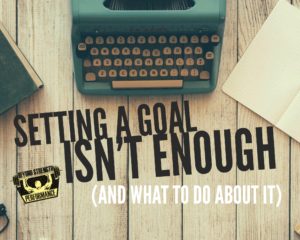I have a crisp 100-dollar bill in my pocket that you’ve been asked, ‘what’s your goal?’ quite a few times in your life. Maybe it wasn’t that direct. Maybe someone asked what you were trying to accomplish—probably your parents, one of your coaches, or one of your teachers. And it’s a good question, we all need aims to help us set priorities and guide our behavior moving forward.

But thinking of, and setting, a goal isn’t enough. We need contingency plans for all of the things that could go wrong.
We need to think of all of the potential barriers to our success.
Why?—so at the first sign of trouble we have the resiliency to keep pushing through because we’ve had the forethought to realize that the road is always bumpy and we need to have strategies for when something gets in our way.
Here’s how the process works with our clients when we set daily goals:
First, we chat about what we’d like to accomplish today—it could be using more weight on during an exercise, or it could be feeling more comfortable with exercise. It’s totally up to whatever the person feels like they want to get better at that day.
Second, we chat about how confident we are that we can make that goal happen…on a scale from 1-10. Then we talk about why the person chose the number that he or she chose. There’s a reason that they chose 7 and not 6—so we talk about all the things that are making them feel confident.
We finish by chatting about barriers. What are all the potential things that could get in the way of them achieving that goal on that day? Then we chat about what we can do to make sure the barriers don’t sabotage the day’s efforts.
You can use this simple process for daily goals, weekly goals, or even long-term goals. But, the first step is realizing that you aren’t done once you set the goal.
